

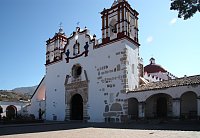
|
A colonial Catholic church built on an ancient Zapotec religious siteThis church, built and rebuilt after earthquake damage, is in the prosperous weaving village of Teotitlán del Valle, a short distance from the capital city of Oaxaca. It is built over the ruins of a much older Zapotec pilgrimage site and some of the ancient pre-Hispanic relief carvings are displayed in the wall of the structure. (See page 2.) This stone church is supported in part by large buttresses on each side and has an emphatic portal with an "alfiz," the carved frame around the arched opening, and a shaped parapet above with painted coping. The octagonal window above would have been starred-shaped in some Mission architecture. |
|
Details of the west frontThe paired towers, one with herm-like pilasters, are relatively squatty, perhaps in response to potential earthquakes, and both have shallow cupolas with tiles in mosaic. |
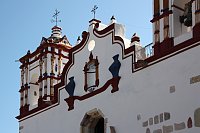
|
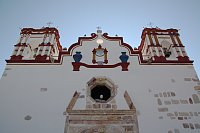
|
Main portal with "alfiz" frame and octagonal windowThe relief decorations here are examples of what is called "tequítqui" style, a blending of two cultures or the fused Indian-European identity seen in the 16th century with the conquest of Mexico. The persistence of Indian beliefs in a Christian context is evidenced in murals, crosses, and sculpture. | ||
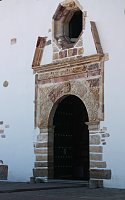
|
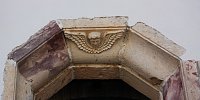
|
Here, in the doorway, the iconography of the bas reliefs focusses on basic native beliefs rather than the newly introduced European Christian ideas. Indeed, except for the allusion to Mary, this facade has none of the usual Christian iconography with various saints and reminders of important Christian events. |
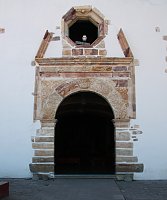
|
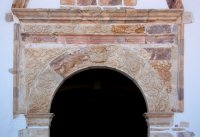
|
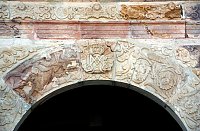
|
Keystone: shell holds the crown indicating the Virgin Mary, Queen of Heaven |
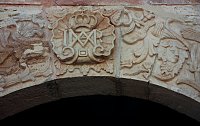
|
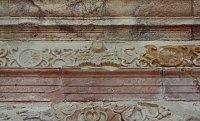 |
"Tequítqui" styleThe reliefs depict important Indian symbols, corn and squash with human heads emerging from the flowers. Perhaps the slanted foreheads are also reminders of the Mayan fixation on this cranial deformity. | ||
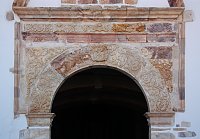
|
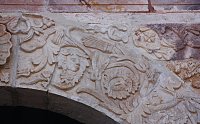
|
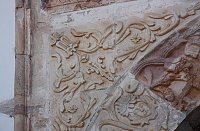
|
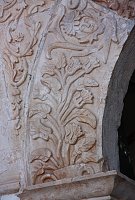
|
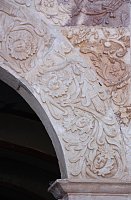
|
"Tequítqui" styleThis style in low relief is characterized by flattened figures with sharp edges--a sort of cookie-cutter look |
The plazaSmall chapels are at the corners for the uninitiated. Like many ancient Christian churches (Old St Peter's, for example) and even ancient Mesopotamian temples, the sacred space of the church is approached gradually--through the main gateway to the plaza, and then through a large open area before entering the most sacred precinct, the church proper. |
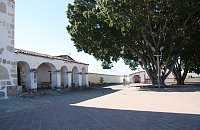
|
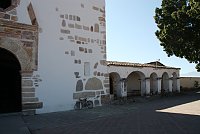
|
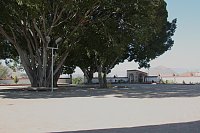
|
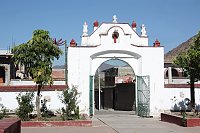
|
Left: one of the corner chapels; center: the main gateway into the plazaThese external walls enclosing the plaza also have pieces of the reliefs of the earlier pre-Hispanic building. See also page 2. |
 Go to the Mexico Index.
Go to the Mexico Index.
 Click here to return to index of art historical sites.
Click here to return to index of art historical sites.
 Click here to return to index of artists and architects.
Click here to return to index of artists and architects.
 Click here to return to chronological index.
Click here to return to chronological index.
 Click here to see the home page of Bluffton University.
Click here to see the home page of Bluffton University.

